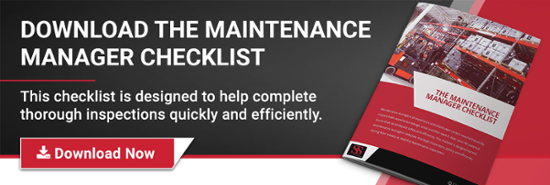Have you ever been to a warehouse and saw what appeared to be a giant elevator? You may not be aware of it, but these large pieces of machinery are an essential tool for ports and shipyards, mining facilities, industrial plants, and oil rigs—among other types of engineering and manufacturing job sites. These “elevators” are known as vertical reciprocating conveyors, or VRC’s.
Before using a VRC, however, it’s important to know its proper functions and maintenance guidelines to keep yourself and workers safe.
What are VRCs?
While the VRC was previously referenced as a type of elevator, a better classification would be a dumbwaiter, or as the name suggests, simply a vertical conveyor belt. The truth is they have a category all their own. VRCs have a national code that holds them to different standards of safety codes than the common elevator. In addition to following the ASME B20.1 code, every state has their own set of regulations that must be adhered to. The reason being is that VRCs are only cleared to carry cargo, not people. Elevators have much higher federal safety regulations because they take a great deal of wear and tear.
How and Why Are They Used?
VRCs help transport materials and supplies, providing easy-access to lift between floors or levels of buildings and manufacturing facilities. Its design for heavy lifting cargo with quickness and efficiency can also increase productivity overall. VRCs are extremely cost effective as well since they require little maintenance or inspections. Due to them being customizable, they can be built for any size mezzanine and building for whatever needs you may have, especially since VRCs can hold up to 100,000 lbs or more! Some are even explosive-proof so that hazardous materials can be lifted safely.
These are considered a much safer alternative to forklifts due to them having strong structural support and the ability to carry cargo with a high weight capacity without operator error. A frameworked VRC can also ensure workers are not at risk for falling when loading and unloading material because they will not tip off balance or fall over.
Maintenance Tips
The slightest problem could severely deteriorate your conveyor belt if it is left unattended. It also poses a greater risk for workers to be injured. While each state has their own specific regulations when it comes to maintenance and inspection, it is important to always troubleshoot malfunctions to the best of your abilities should one occur.
Before checking the VRC, always remember to wear protective gear, like goggles, and be sure nothing loose is hanging from your person that could potentially get caught in the machine. Be mindful where you place your hands on the conveyor. VRCs use a large amount of electricity. Placing your fingers on the belt could result in broken fingers, or a more serious injury.
A helpful trick to hear inside the conveyor is by putting the tip of a screwdriver against a roller shaft and placing your ear on the handle. If there are rattling or other strange noises coming from the machine, this may indicate a loose chain or screw. Turn off the machine and tighten the necessary parts, and if they can’t be saved, replace the materials immediately. Other problems that can have a VRC operating incorrectly are having it draw too much electricity, being overloaded with weight, or the photo eyes being misaligned. A VRC that is forced to operate at a speed or weight limit that it wasn’t designed for can blow a circuit breaker.
The functions of a VRC are a valuable resource for multiple job areas, and are cost effective when it comes to maintenance and inspections. They can manage insurmountable weight for any product needs and are easily customizable for a particular building or job site. VRCs are proving to not only be a safer alternative to forklifts, but are a key solution for faster productivity.
Need help finding the perfect warehouse storage solution for your needs? Contact the experts at Southern States Storage & Handling to learn more today!






